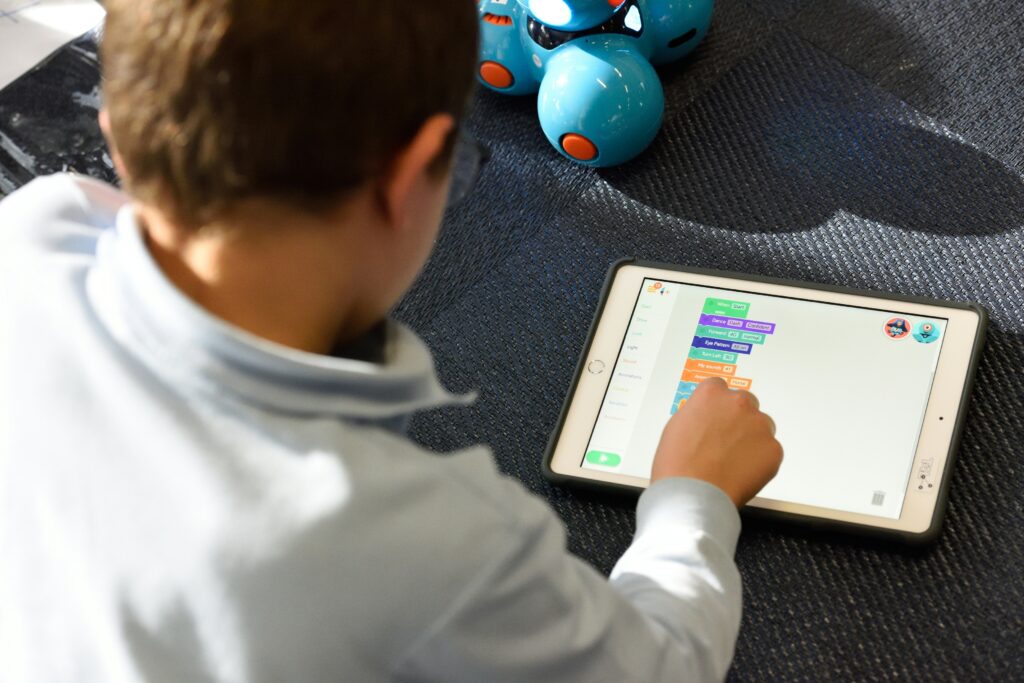Photo by Vitaly Gariev on Unsplash
Universal Design for Learning (UDL)
The Universal Design for Learning is a framework that encourages educators to plan with diversity in mind before even knowing our students needs. By incorporating multiple means of engagement, representation, action and expression, we plan learning experiences that work for all kinds of learners (CAST, 2024). Many barrier exist when learning that are often out of students control (Clement, 2016). Through designing with inclusion in mind from the beginning and considering barriers that may impact general learning, educators will find that an adaptation that benefits one student will likely benefit many others (Government of Canada, 2025). These barriers should not be the reason students are not successful, as we are not assessing them on their ability to hurtle over them. By removing them, we give everyone a fair chance.
Inclusive Learning Design
Inclusive learning design takes UDL one step further and encourages us to consider whether students see themselves in the learning environment, in the content, and in the way the content is delivered. We want them to feel like they belong and that the learning is relevant to them. Some strategies educators can use to ensure that learning environments support equity, belonging and representation include:
- Make sure multiple perspectives and ways of life are present in discussions and content.
- Ensure a safe and supportive environment through collaborative respect, so people feel comfortable to share and be present.
- Teach and plan using the UDL framework, offering flexibility and removing barriers.
- Scaffold learning for support, gradually releasing as students gain confidence.
- Hold every student to the same high expectations, but ensure there are multiple pathways to get there.
- Show care for individual student success and happiness and adapt based on specific needs.
- Allow learner choice when appropriate.
- Incorporate John Keller’s ARCS Model of motivation (Attention, Relevance, Confidence, Satisfaction).

Online courses, whether synchronous or asynchornous, need to be highly engaging to be successful. These courses often mean less connection than in-person classes, so they also need to be easy to access and follow for all learners (Kim et al., 2019). A lot of the ways an educator can ensure engagement and accessibility for all learners is by following the UDL framework when designing these classes, including ensuring students have access to content.
By having a classroom environment that not only accepts but encourages diversity, every student benefits. It not only aids with learning content material through having multiple means of engagement, representation, action and expression, it teaches students to be more inclusive citizens (University of Delaware, n.d.). When it comes to having multiple diverse learning needs in the classroom, we need to shift our thinking from seeing it as a challenge, to seeing it as a resource (Hotchin, 2025). For example, in my final practicum, we had a chart with the four animals and their Coast Salish characteristics. Students were matched with an animal based on their strengths and interests, and when other students in the room needed help with a specific thing, we would encourage that student to “find a wolf” or “find a salmon.” This was my mentor teacher and I’s way of using diversity as a resource.
Online Learning Environments
Because online courses mean less connection, educators need to find ways to ensure students feel connected to them, to the content, and to each other. To ensure student-educator interactions, educators need to be accessible to students when they need support and feedback. This can be via live synchronous meetings, online discussions, email, etc. Student-content interactions can happen through discussion posts or reflections (such as our community contribution in this course), an online class mind map, virtual science labs, interactive videos, quizzes or games, etc. Student-student interactions can happen through group projects or challenges, synchronous live session breakout rooms, group chats, online discussions or blogs, etc. By incorporating these interactions, students are more likely to feel included and connected to not only the content, but the learning environment. They are also more likely to be engaged, because rather than just experiencing content, they are interacting with every component of the learning experience; teacher, content, and other students.
There are many different pros and cons for both synchronous and asychronous classes. For example, synchronous classes help students feel connected and allows for immediate feedback. However, it doesn’t provide the same flexibility and pacing that asynchronous classes do. Personally, I love the connection that comes from being in a room full of people working towards similar goals. However, I learn much better in asynchronous classes because I can work at my own pace, plan my learning around when I’m in the right headspace, supplement content with other content to build my understanding, and take detailed notes, rewinding or rereading if needed. By incorporating a balance of the two, educators can fit the needs of most learners, providing both connection and flexibility for students struggling with situational barriers (Patterson, 2018, as cited in Hotchin, 2025).
References
- CAST (2024). The UDL Guidelines. https://udlguidelines.cast.org/
- Clement, L. (2016). External and Internal Barriers to Studying Can Affect Student Success and Retention in a Diverse Classroom. ASM Journals: Journal of Microbiology & Biology Education, 17(3). https://journals.asm.org/doi/full/10.1128/jmbe.v17i3.1077
- Gariev, V. (2025, September). Young boy using a tablet on a couch. [Photograph]. Unsplash. https://unsplash.com/photos/young-boy-using-a-tablet-on-a-couch-HoFkNjraNUY?utm_content=creditCopyText&utm_medium=referral&utm_source=unsplash
- Government of Canada (September 19, 2025). Universal Design for Learning: UDL. https://a11y.canada.ca/en/universal-design-for-learning-udl/
- Hotchin, J. (2025, September 28). EDCI 335 Module 3 PowerPoint. [Video]. YouTube. https://www.youtube.com/watch?v=gRlo3uUrPsY&t=1024s
- Kim, H.J., Hong, A.J., & Song, H.D. (2019, June 21). The roles of academic engagement and digital readiness in students’ achievements in university e-learning environments. International Journal in Higher Education. https://educationaltechnologyjournal.springeropen.com/articles/10.1186/s41239-019-0152-3?utm_source=chatgpt.com
- stem.T4L (2019, September 15). man using silver iPad. [Photograph]. Unsplash. https://unsplash.com/photos/man-using-silver-ipad–PnSpCHYKsw?utm_content=creditCopyText&utm_medium=referral&utm_source=unsplash
- University of Delaware: Centre for Teaching and Assessment of Learning (n.d.). Diversity and Inclusive Teaching. https://ctal.udel.edu/resources-2/inclusive-teaching/#:~:text=Teaching%20for%20diversity%20refers%20to,handled%20with%20fairness%20and%20justice.


October 13, 2025 at 6:30 pm
Howdy Brynn, I really enjoyed reading your blog post about inclusion. I thought your inclusion learning design was really great. You showed many sources for teachers and gave guidelines for implementation, which are really important steps to making sure all students feel included. Some things I would suggest adding to our thinking about is how teachers could measure if they are being successful. For example, you give “Make sure multiple perspectives and ways of life are present in discussions and content” as a part of your checklist. I think this is great, but how can you take this idea, present it to a teacher, and have some criteria or something that you’re able to give them so they can do a self-evaluation to see if or where they should adjust their teaching?
Anyways, I really enjoyed reading your blog post!
October 20, 2025 at 7:57 pm
Hi Roman. That’s a good idea. I know that there are many online checklists for creating an inclusive classroom community. These checklists cover many different aspects of the classroom including assessment, environment, resources, content, content delivery, etc. However, having a tool to measure how efficiently you are achieving each checklist item could be really useful, especially if it was able to tell you exactly where you needed to improve. With AI taking off, I wouldn’t be surprised if someone created that tool for teachers soon.